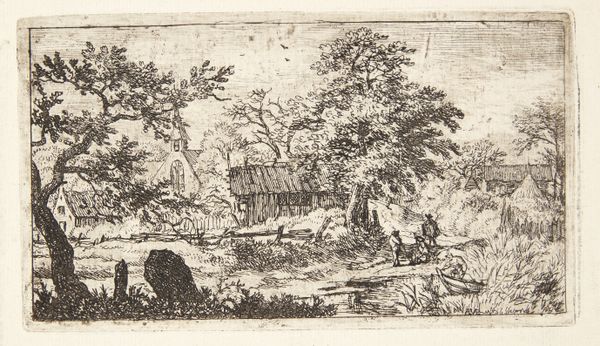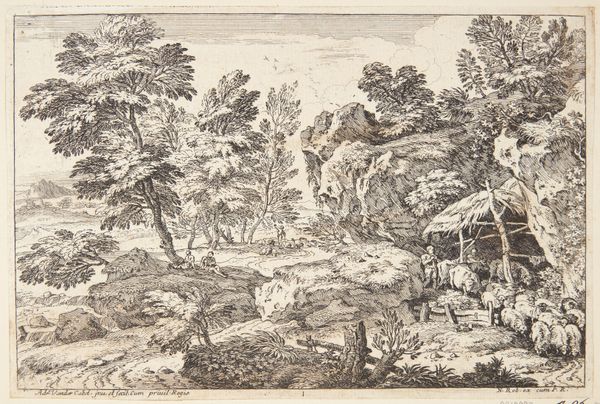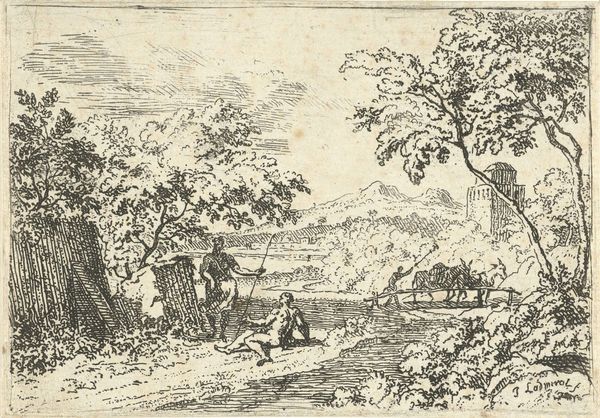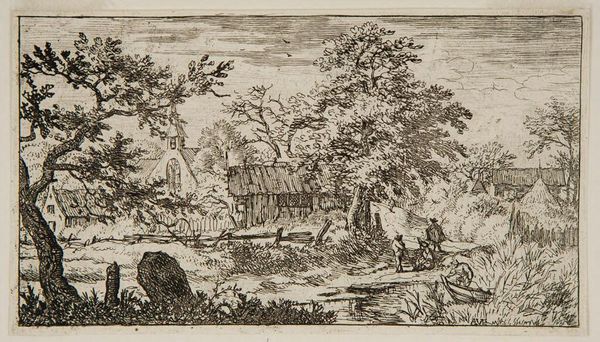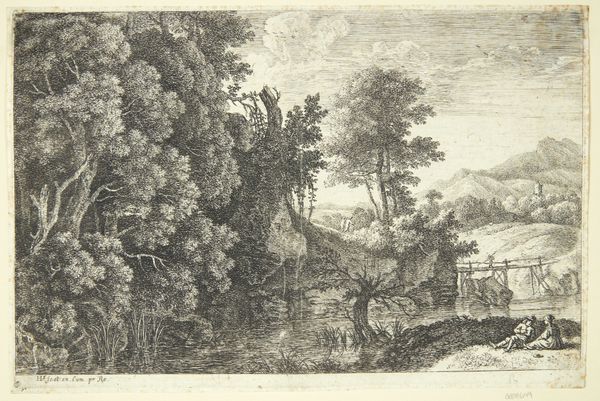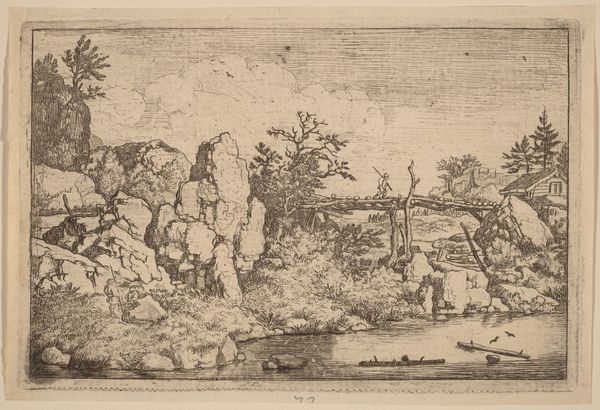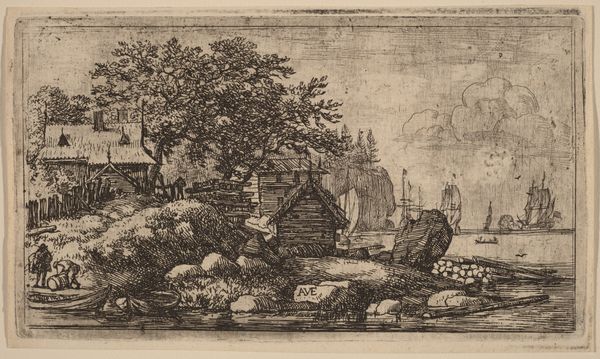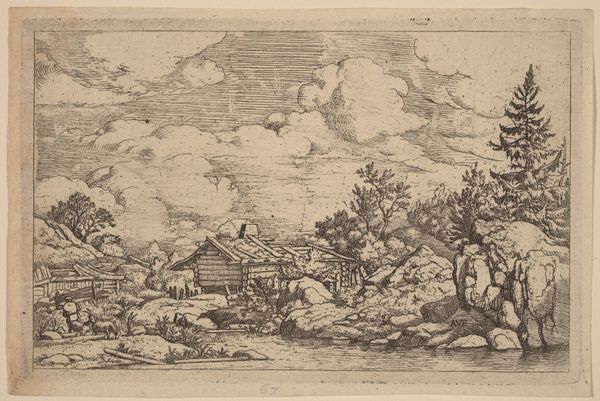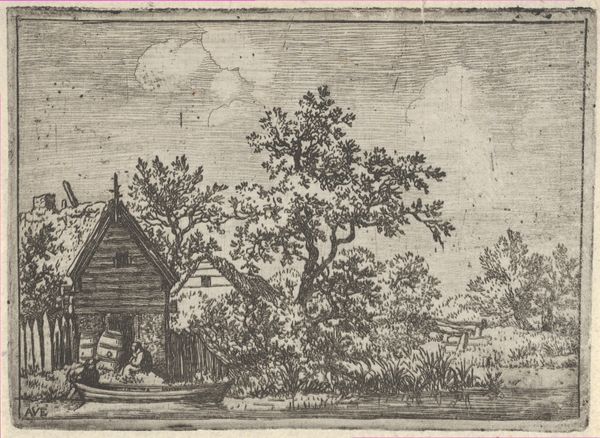
print, etching
#
baroque
#
dutch-golden-age
# print
#
etching
#
landscape
Dimensions: 84 mm (height) x 147 mm (width) (bladmaal)
Allaert van Everdingen created this landscape with a rowing boat using etching, a printmaking technique involving acid to cut lines into a metal plate. The character of this material is paramount. Notice the fineness of the lines, and the relatively limited tonal range, from white to black. This is partially due to the etching process itself. Everdingen would have covered his metal plate with a waxy, acid-resistant ground, then scratched through it with a needle to expose the metal beneath. Immersing the plate in acid would then bite away at the exposed lines, creating grooves that would hold ink for printing. Consider also the socioeconomic implications. Printmaking allowed artists to circulate their images widely, reaching a broader audience than paintings could. This helped to build Everdingen's reputation, and also fostered a growing market for affordable art among the rising middle class. Etching, therefore, wasn't just a technique; it was a key element in the commercialization of art, blurring the lines between craft production and artistic expression.
Comments
No comments
Be the first to comment and join the conversation on the ultimate creative platform.
